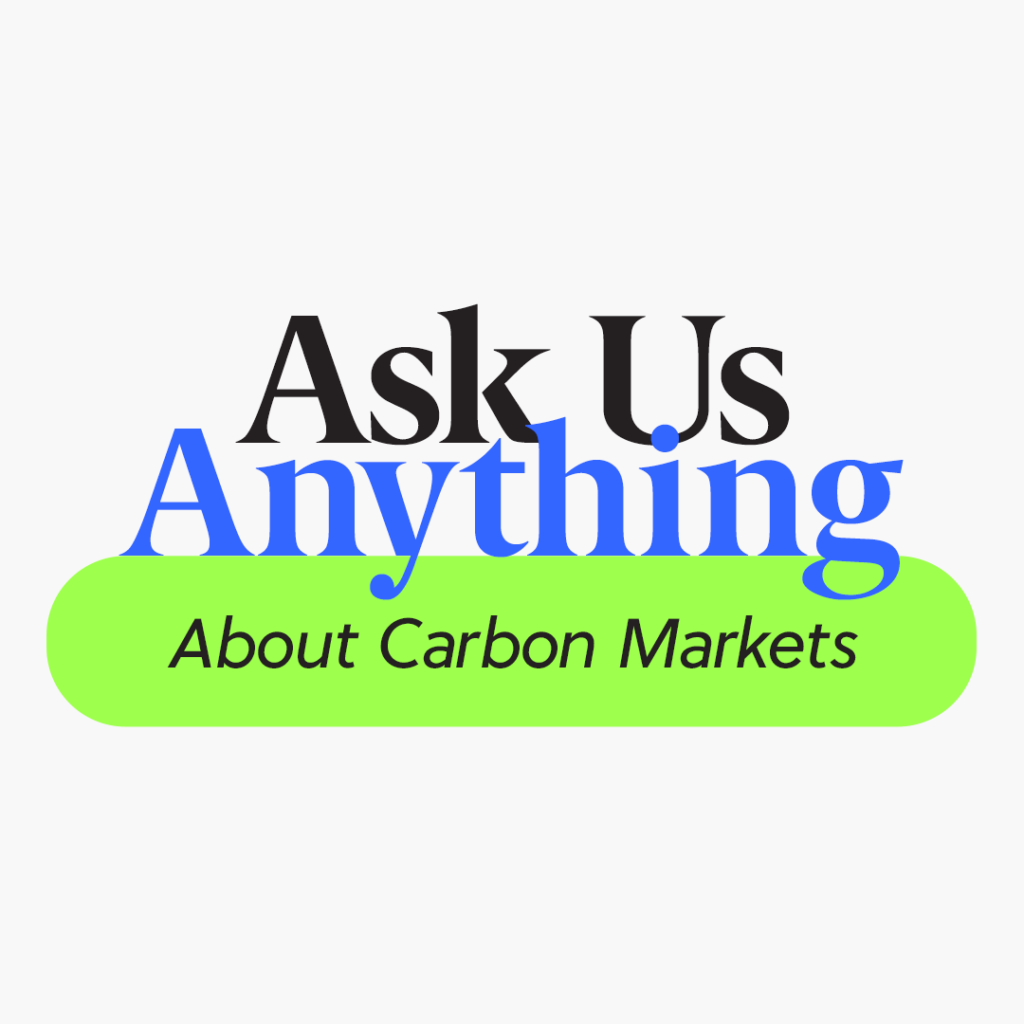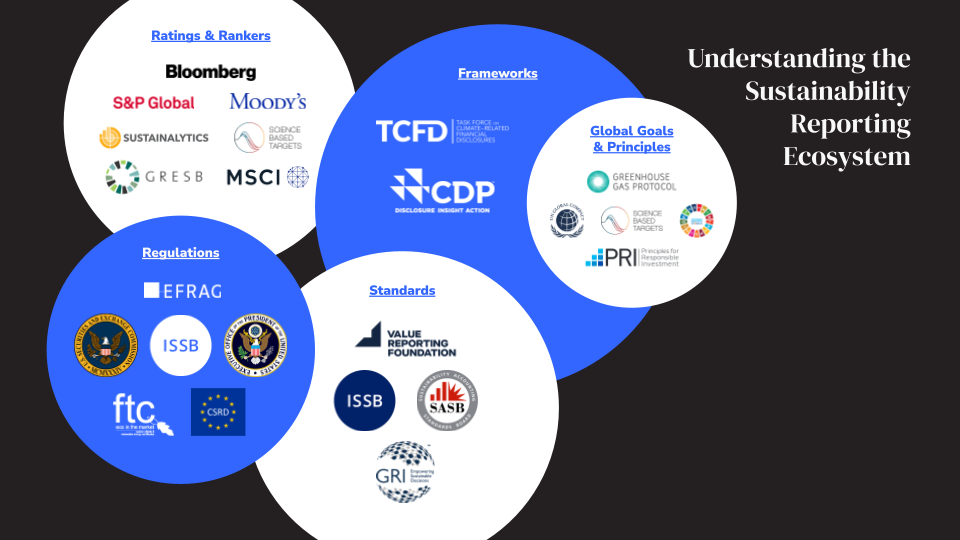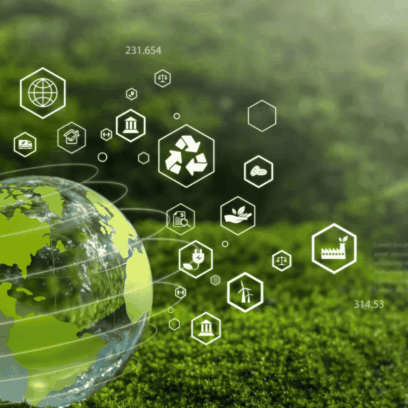Sustainability Reporting Frameworks, Standards, and Protocols: A Complete Guide


🌍 Carbon markets can feel overwhelming—fragmented data, limited transparency, and conflicting advice make it hard to know where to start. In this webinar, our experts give a clear, practical introduction to the VCM.

SUSTAINABILITY REPORTING OVERVIEW
Sustainability reporting serves as a valuable tool to achieve corporate commitments and better manage climate-related business risks. This white paper walks you through what’s typically included and what should be considered.
A guide to understanding the sustainability reporting ecosystem used for voluntary disclosures, and relevant regulations.
As businesses and their stakeholders, including but not limited to customers, investors, and employees, increasingly recognize the importance of environmental, social, and governance (ESG) performance, it’s essential to understand how various sustainability reporting mechanisms work together to enable effective voluntary disclosure of these factors. In this post, we will focus on the “E” aspect of ESG, exploring the world of sustainability reporting frameworks, standards, and corresponding protocols that organizations can use to voluntarily disclose climate impacts, risks, and other environmental factors, such as water and plastic waste. Following these reporting structures is not required when reporting voluntarily. However, they can be very helpful. Some frameworks even offer industry-specific protocols, while others can be applied to both organizations and municipalities.
Furthermore, the below lines will illustrate relevance between common frameworks and upcoming or proposed regulations that would affect some United States (US) businesses, including the Securities and Exchange Commission (SEC) climate disclosure rule, the federal supplier rule, and the European Union’s (EU’s) Corporate Sustainability Reporting Directive (CSRD). Join us as we navigate the complex landscape of sustainability reporting and its essential components.
Understanding the Sustainability Reporting Ecosystem
To get a handle on the reporting ecosystem, first, it’s essential to differentiate between its various components:
Frameworks
Sustainability reporting frameworks, also referred to as ESG frameworks or ESG reporting frameworks, are high-level guidelines or approaches that provide organizations with a structure to identify, assess, and report on sustainability issues relevant to their operations. These frameworks allow companies to benchmark their performance against industry peers and global best practices, and to communicate their progress to stakeholders, including investors, regulators, customers, and employees.
There are several well-known sustainability reporting frameworks, such as the CDP (formerly the Carbon Disclosure Project), the Global Reporting Initiative (GRI), the Sustainability Accounting Standards Board (SASB), European Sustainability Reporting Standards (ESRS), the Supplier Ethical Data Exchange (SEDEX), Integrated Reporting Framework (IIRC), and the Task Force on Climate-related Financial Disclosures (TCFD). Each framework has its unique focus, but they all share the common goal of promoting transparency, comparability, and accountability in sustainability reporting. Frameworks provide a more flexible structure, outlining guiding principles and reporting categories across a broader range of environmental, social, and economic considerations.
Standards
Standards are the more detailed and specific guidelines that build upon the principles set forth by frameworks. They outline the precise requirements, metrics, and indicators organizations should use to report on specific sustainability topics. Standards enable comparability across organizations and sectors by providing a common language and set of metrics to measure and disclose sustainability performance.
Standards vary depending on the framework and the industry sector. For example, the GRI offers a set of universal standards applicable to all organizations, as well as topic-specific standards that address industry-specific issues. The SASB, on the other hand, focuses on industry-specific standards designed to capture the financially material ESG issues for companies within a particular sector. Standards offer clear, measurable requirements for specific sustainability aspects, often focusing on environmental impact or ethical sourcing (e.g., ISO 14064 for greenhouse gas emissions or FSC for responsible forestry).
Protocols
Protocols are the specific tools, methodologies, or instructions that help organizations to measure, monitor, and report their sustainability performance in line with the chosen framework and standards. Protocols can be separate from or built-in as part of the frameworks.
Protocols offer detailed guidance on how to collect, calculate, and disclose data consistently and accurately. In addition, they can address various aspects of sustainability reporting, such as greenhouse gas (GHG) emissions accounting, water usage, waste management, energy usage, and plastic waste generated.
Some protocols, like the GHG Protocol, can be used across different frameworks, as they provide universally accepted measurement and reporting methodologies for GHG emissions. Other protocols may be more specific to a particular framework or industry. For example, the GRI has its own set of protocols embedded within its standards.
Protocols bridge the gap between the high-level guidance of frameworks and the specific requirements of standards. They ensure consistency and accuracy in data collection within a specific area, making comparisons between companies more meaningful.
In summary, frameworks provide the “why” (guiding principles), standards set the “what” (reporting requirements), and protocols detail the “how” (specific methodologies) for effective sustainability reporting.

Additional Components in the Sustainability Reporting Ecosystem
In addition to frameworks, standards, and protocols, the sustainability reporting ecosystem comprises several other components. Ratings evaluate and score organizations’ sustainability performance based on specific criteria, while rankings compare and list organizations’ performance relative to peers or industry benchmarks. Regulations, established by governmental or regulatory bodies, set mandatory sustainability reporting requirements. Global goals, such as the United Nations (UN) Sustainable Development Goals (SDGs), provide a set of universal targets and objectives to guide sustainability efforts. Finally, principles, like the UN Global Compact, define foundational commitments and values that shape organizations’ sustainability strategies. These components work in concert, complementing and supporting each other throughout the reporting process to create a cohesive sustainability reporting system.
Frameworks, Standards, Protocols, and Relevant Regulations
Now that we’ve covered each component individually, below is a chart that illustrates the complex interplay between frameworks, standards, protocols, and relevant regulations in the sustainability reporting ecosystem. These components work together to create a comprehensive and robust reporting landscape that enables organizations to effectively and voluntarily disclose their environmental performance.
How the different sustainability reporting mechanisms work together
| Reporting Component | Examples | Description | Corresponding Protocols | Relevant Regulations | Relevance |
| Frameworks | CDP (formerly known as Climate Disclosure Project) | Encourages environmental transparency and performance improvements through carbon, water, and forest-related disclosures, as well as new plastics disclosures. | CDP Questionnaires, CDP-Water Protocol, CDP-Forest Protocol, GHG Protocol | EU CSRD, *Federal Supplier Rule | Both the EU CSRD and Federal Supplier Rule focus on environmental disclosures, aligning with CDP’s broad range of environmental reporting requirements. The GHG Protocol supports CDP by providing guidelines for measuring and managing greenhouse gas emissions. |
| Integrated Reporting (IR) | Provides a holistic approach to reporting, combining financial, environmental, social, and governance aspects to demonstrate an organization’s value-creation process. | International (IR) Framework, GHG Protocol | EU CSRD | The EU CSRD seeks comprehensive and integrated reporting, making IR’s holistic approach to demonstrating an organization’s value creation process relevant for compliance. The GHG Protocol helps measure and manage emissions in reporting. | |
| Standards | Global Reporting Initiative (GRI) | Offers a comprehensive approach to sustainability reporting, focusing on a wide range of ESG issues. | GRI Standards, GHG Protocol | EU CSRD | The EU CSRD requires detailed sustainability reporting, aligning with GRI’s comprehensive approach to ESG disclosure. The GHG Protocol supports GRI by providing guidelines for measuring and managing greenhouse gas emissions. |
| Sustainability Accounting Standards Board (SASB) | Provides industry-specific reporting, enabling businesses to disclose financially material ESG information. | SASB Standards, GHG Protocol | *SEC Climate-Disclosure Rule, EU CSRD | The SEC rule and EU CSRD require material ESG disclosure, making SASB’s industry-specific reporting on financially material ESG information relevant for compliance. The GHG Protocol supports SASB by providing guidelines for measuring and managing greenhouse gas emissions. | |
| ISSB Standards | Incorporates and expands upon the TCFD recommendations, focusing on general requirements for sustainability-related financial information and specific climate-related disclosures. | IFRS S1 & IFRS S2 Protocols | *SEC Climate-Disclosure Rule, EU CSRD | Companies applying the ISSB Standards will meet the TCFD recommendations, streamlining compliance with regulations like the SEC rule and EU CSRD. | |
| ESRS Standards | Set of regulations being implemented by the European Union that will mandate how companies report on their sustainability performance. | ESRS Standards | Corporate Sustainability Reporting Directive (EU CSRD) | The CSRD mandates the use of the European Sustainability Reporting Standards (ESRS) for companies within its scope. These standards define the specific requirements for how companies report on their sustainability performance. The CSRD and ESRS focus on environmental, social, and governance (ESG) aspects of a company’s operations. By requiring standardized reporting through ESRS, the CSRD aims to increase transparency and allow for better comparison of a company’s sustainability performance across different sectors. This benefits stakeholders like investors and consumers. |

Certified Offset Portfolios
Buying high-quality carbon offsets has never been easier. Explore CBCO Portfolio 22-1 and get instant access to fully vetted carbon offsets.
More on Protocols: The Building Blocks of Standards and Frameworks
Protocols play a crucial role in providing detailed guidance on data collection, calculation methodologies, and reporting requirements within these frameworks and standards, enabling comparability and consistency across sustainability reports. The following list explains the relevance of each protocol mentioned in the chart above and how they support the respective reporting framework or standard.
- ISSB Standards (IFRS S1 & IFRS S2): These standards integrate TCFD recommendations, guiding organizations on sustainability-related and specific climate-related disclosures.
- GHG Protocol: This protocol supports various reporting frameworks and standards by providing guidelines for measuring and managing GHG emissions, enabling organizations to track their climate impact.
- CDP Questionnaires: These questionnaires help organizations respond to CDP's annual disclosure requests, providing a structured format for reporting carbon, water, and forest-related information.
- CDP-Water Protocol: This protocol provides guidance on reporting water-related risks, opportunities, and impacts, enabling organizations to align with the CDP's water disclosure requirements.
- CDP-Forest Protocol: This protocol offers guidance on disclosing forest-related risks, opportunities, and impacts, helping organizations comply with CDP's forest disclosure requirements.
- International (IR) Framework: This framework guides organizations in developing integrated reports that demonstrate their value-creation process, considering financial, environmental, social, and governance aspects.
- GRI Standards: These standards help organizations report on a wide range of ESG issues in a consistent and comparable manner, following the comprehensive approach of the Global Reporting Initiative.
- SASB Standards: These industry-specific standards enable businesses to disclose material ESG information in a consistent manner, aligning with the Sustainability Accounting Standards Board's approach.
- European Sustainability Reporting Standards (ESRS): These standards are a set of regulations being implemented by the European Union that will mandate how companies report on their sustainability performance. The ESRS represents a significant step towards a more sustainable European economy by promoting responsible business practices and better-aligning sustainability reporting across the region.
Consolidation in Sustainability Reporting Landscape
The sustainability reporting landscape is undergoing significant consolidation. The Financial Stability Board's completion of the TCFD's work has paved the way for the ISSB Standards, which encompass and expand upon TCFD recommendations. This integration simplifies the "alphabet soup" of disclosure initiatives, streamlining reporting for companies and investors. The ISSB has also incorporated insights from the SASB Standards and the Climate Disclosure Standards Board (CDSB), further centralizing sustainability disclosure guidelines. Additionally, the Integrated Reporting Framework, co-managed by the ISSB and IASB, complements the ISSB Standards, emphasizing the interconnectedness of resources, relationships, and sustainability in shaping a company's future.
Importance of Understanding the Sustainability Reporting Ecosystem for Regulatory Compliance
By understanding and staying up-to-date with the ever-evolving sustainability landscape, including the "alphabet soup" of disclosure initiatives, brands can ensure compliance with future regulations, reduce operational risks, and enhance credibility with stakeholders.
Order of Integration
Integrating frameworks, standards, and protocols into sustainability reporting is not strictly sequential but rather an iterative and interconnected process. However, to better understand their interplay, one can think of the process in the following order:
- Framework selection: Organizations first choose a suitable sustainability reporting framework that aligns with their strategic goals, stakeholder expectations, and industry context.
- Standard identification: Within the chosen framework, organizations identify the relevant standards, both universal and industry-specific, to capture and report material sustainability issues.
- Protocol application: Finally, organizations apply the appropriate protocols to measure, monitor, and report their sustainability performance in accordance with the selected framework and standards.
By cohesively integrating these elements, organizations can enhance the credibility, transparency, and impact of their sustainability reporting, ultimately driving positive change toward a more sustainable future.
Conclusion
Understanding the intricacies of frameworks, standards, and protocols is essential for organizations aiming to create a solid sustainability strategy. By becoming familiar with the various components involved in the sustainability reporting process, organizations can develop comprehensive sustainability reports that cater to diverse stakeholders, effectively demonstrating their commitment to sustainability. As the reporting landscape continues to evolve, ensuring your organization remains compliant with relevant and emerging regulations and meets stakeholder expectations is crucial for success.
If your organization is seeking guidance in evaluating its sustainability reporting needs and navigating the complex reporting landscape, do not hesitate to contact us. Our team of experts can help. Reach out today to get started on your journey toward a more sustainable and responsible business practice.
Want to email Pankaj directly? Click here.
To choose the most suitable sustainability framework, also referred to as ESG framework or ESG reporting framework, for your organization, consider the following factors: your organization's strategic goals, stakeholder expectations, industry context, and any regulatory requirements. Research the frameworks mentioned in this post, such as GRI, SASB, and ISSB, to understand their unique focus and requirements. It might also be helpful to consult industry peers or seek external guidance to ensure you select the best framework for your specific needs.
Yes, organizations can use multiple sustainability frameworks, also referred to as ESG frameworks or ESG reporting frameworks, and standards to meet different reporting objectives, stakeholder expectations, and regulatory requirements. In some cases, frameworks and standards can be complementary, allowing for a more comprehensive approach to sustainability reporting. However, be mindful of the resources required to implement and maintain multiple reporting systems and ensure that they are aligned to avoid duplication of efforts or conflicting information.
First, become familiar with the regulations that are potentially applicable to your organization, such as the SEC climate disclosure rule, the federal supplier rule, or the EU CSRD. Then, map these regulatory requirements to the chosen frameworks and standards to ensure all necessary disclosures are included in your reporting. Additionally, establish internal processes and controls to ensure consistent and accurate data collection, analysis, and reporting in accordance with the chosen frameworks, standards, and protocols.
Adopting the appropriate protocols is crucial for ensuring the quality and accuracy of the sustainability data reported by your organization. Protocols provide detailed guidance on data collection, calculation, and disclosure. Ensure that your organization follows the recommended industry best practices and protocols for the chosen framework and standards, and consider implementing internal controls, such as audits or third-party verifications, to validate the accuracy and reliability of the reported data.
Stakeholders, including investors, regulators, customers, employees, and communities, play a significant role in the sustainability reporting process. Their expectations and requirements can influence the choice of frameworks, standards, and protocols your organization adopts. Engaging with stakeholders and soliciting their feedback can help ensure that your organization's reporting is relevant, transparent, and credible, ultimately contributing to improved financial performance, risk management, and long-term sustainability.

About the Author
Pankaj Tanwar is Managing Director of Climate Services at CarbonBetter. He has experience leading Fortune 100 companies through their sustainability journeys, including sustainability driven growth in the food industry. Pankaj holds an MBA from Northwestern University’s Kellogg School of Management and a BTech in Mechanical Engineering from the Indian Institute of Technology, Kanpur.



